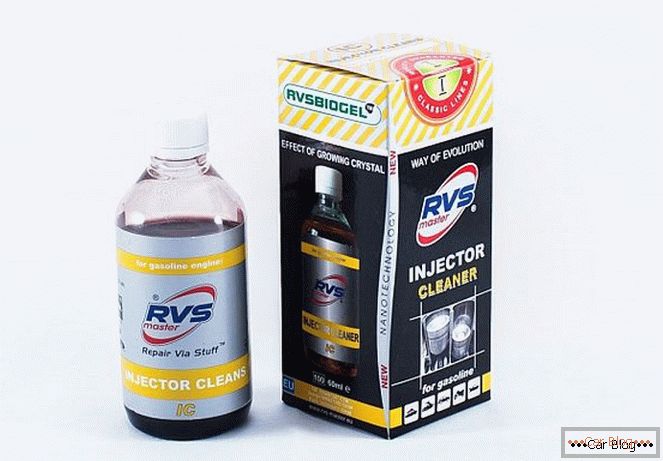A well-groomed car should be not only outside, but inside as well, and in some places wiped upholstery or scratched plastic can be restored independently. To return a decent look to a damaged plastic, it is not necessary to arrange a complete repair of the car’s interior; it is enough to put in order some problem areas.
Sometimes it does not even have to remove the plastic panels. Independent restoration work will be significantly cheaper than replacing a damaged interior zone. But the quality depends on their own zeal and desire to transform the interior.
Content
- 1 How can plastic be repaired
- 2 Coloring the deformed zone
- 3 Padding plastic
- 4 Application of decorative film
- 5 Manual grinding
- 6 Conclusion
How can plastic be repaired
Experienced motorists know several popular methods of plastic resuscitation. In each case, you will get a decent result, but you need to choose which of the options you personally use yourself. High-quality restoration of plastic car interior with their own hands envy and from the materials used.
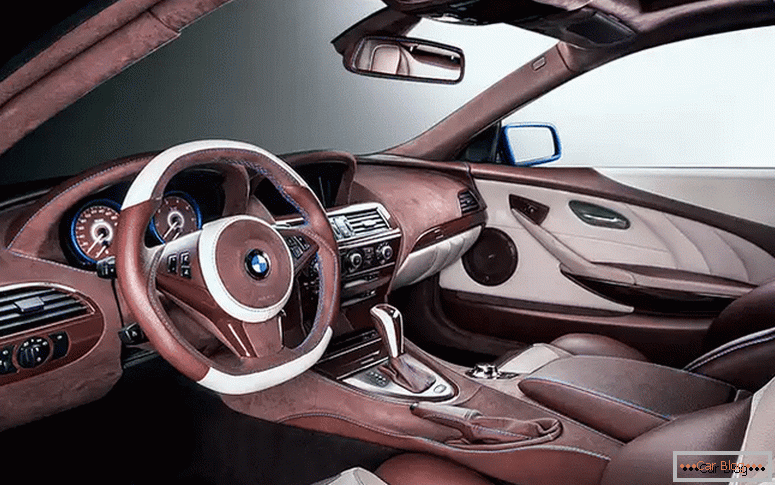
Not always more expensive way brings the expected result. It happens, the skill and diligence of the performer plays a crucial role in bringing the cabin in order.
Popular ways to repair plastic:
- staining of the damaged area;
- sticking masking film;
- dragging the area with kozhzam or genuine leather;
- manual grinding with heating.
We will deal with each method in detail.
Coloring the deformed zone
The first thing that comes to mind most car owners, when there is a desire to do the repair of plastic interior of the car with his own hands, this desire to paint over an ugly place. Performing this operation will require the following equipment:
- a flap of fine-grained emery paper;
- special paint and primer for plastic of the corresponding color;
- varnish for plastics;
- tool kit for disassembling the panels.
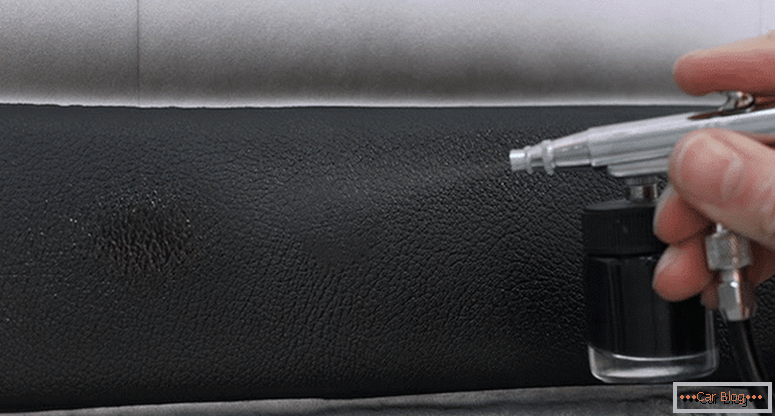
It is preferable to carry out restoration work on the dismantled element. During removal, you must use a special tool that will provide disassembly without additional damage to the surface. After cleansing the outside of the contamination and carry out degreasing permitted for plastic substances. You can check the reaction of the liquid on the plastic from the back side, and then wait 15-20 minutes. If the liquid does not cause harm, then it is applied on the front surface.
We fill deeper grooves, let the surfaces dry, and process the top with sandpaper (zero). Marking paper should be P 1200.
You need to know that manual grinding is carried out in a circular motion.
We apply 1-2 coats of primer to all zones for better fixation of paint. When the ground is dry, you can blow paint. It can be either in cylinders of 200 or 500 ml under pressure, and filling for spray or airbrush.
See also: How to wear car seat coversDry the workpiece preferably in a horizontal position so as not to get drips. Apply a layer or two varnishes on the layers of paint. Additional means of heating for fast drying can not be used.
Hauling plastic
In some cars, plastic elements are decorated with leather or leatherette. If this surface is damaged, the entire outer layer of the element must be replaced.
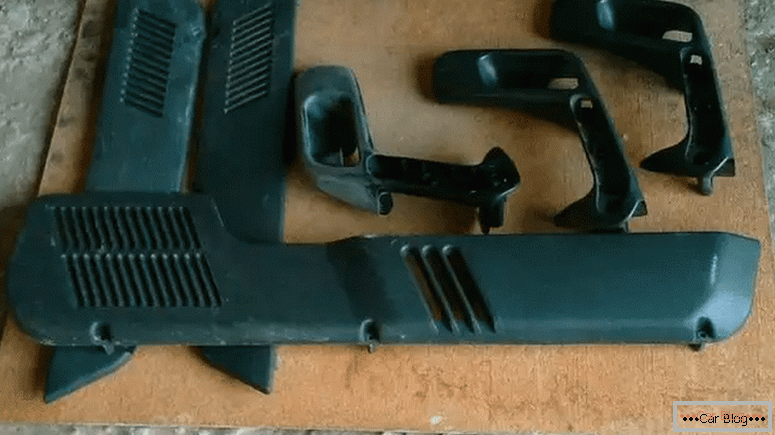
Disassembly of damaged plastic
Required attributes:
- material for the waist;
- special glue;
- construction knife;
- set to remove the elements of plastic decor.
Dismantle the damaged item. We get rid of the damaged area by removing the whole or part of the upholstery with a stationery knife. From the prepared piece of upholstery material we cut out the flap for updating. Remove debris and degrease the surface. Apply glue and level the material with a rubber roller. Give dry and install in its place.
Application of decorative film
Scratched or rubbed plastic can be hidden with a color film. Vinyl base will update the interior of your car. This film is often used as a means to restore the plastic in the car.

Decorative film
With this method of resuscitation of plastic parts of the cabin will need:
- roll of vinyl film;
- industrial hair dryer with adjustable heat;
- construction knife;
- roller with rubberized surface;
- set of spatulas with metal or plastic tips.
Will update the entire car interior. All plastic elements that need to be processed are pre-dismantled. Next, we cut the film according to selected plastic parts that have been pre-cleaned and degreased.
We process in turn each plastic. To do this, we separate the lower protective layer from the vinyl film and its adhesives on the selected part. Begins sizing on one side, maintaining the tension. After fixing, we warm the outer side with a hair dryer and straighten the film from the middle to the edges, getting rid of random air bubbles and wrapped "waves".
In places inaccessible to the roller, use spatulas. We work with them carefully, so as not to break the plastic film. The part should be fixed after processing with the film. It takes 20-30 minutes. The treated element is fastened in its place. The procedure is repeated with the rest of the plastic.
See also: The principle of the car air conditionerManual grinding
Minor damage to the surface can be hidden in an easier way. This will require a minimum of material and tools:
- sandpaper flap (zero);
- clean old terry towel;
- household or building hair dryer;
- chemical agent for degreasing.
To carry out such work, you can not disassemble the plastic. However, the treatment area should be easily accessible and open to close blowing with warm air. If this is not provided, it is better to dismantle and process the item separately.
-

- Step 1. We select sandpaper
-
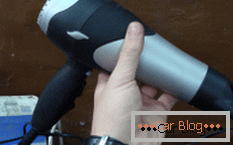
- Step 2. Cooking a hairdryer
-
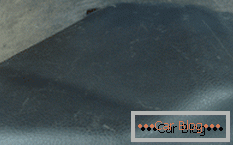
- Step 3. Dismantle the damaged part.
-
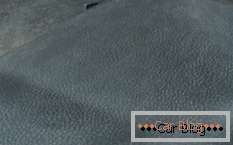
- Step 4. We perform sanding
-
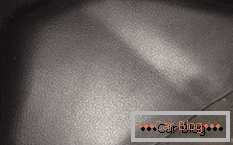
- Step 5. Heat and finish process
Processing begins with cleaning and degreasing. Next, we scrape the damage using sandpaper in a circular motion. It is not necessary to press the paper strongly to the surface, so as not to leave visible grooves.
You need to know that large furrows from deformation can be hidden by rubbing the surface with paper with a slightly larger grain size.
Now you can warm the surface with the warm air of the hair dryer and immediately rub in a circular pattern with a towel. Too overheat the plastic should not be also not necessary to aggressively push on the towel.
Conclusion
Repair of plastic inside the car with your own hands can be performed even in garage conditions with minimal fixtures. For deep scratches, you will need a putty, and minor defects can be rubbed on a heated surface with a terry cloth. To glue the film, it is necessary to choose high-quality material so that it does not lag behind during the cold season and “float” in the heat. It is advisable to buy consumables not in the market, but in a reliable car shop.


